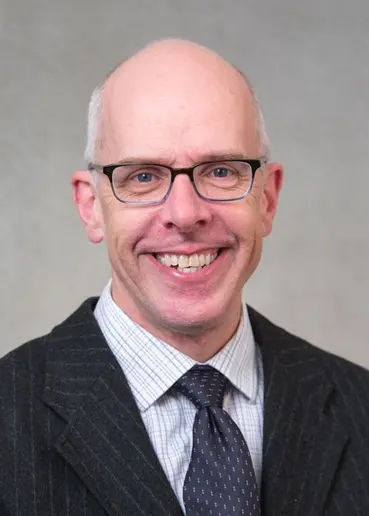

Dr. David Kinkela


Dr. David Kinkela
Historians typically spend their time in the classroom teaching and in the archives researching and writing, but Department of History Professor David Kinkela joined 14 other SUNY scholars in the Adirondacks as part of a federally funded effort to reimagine the U.S. history curriculum at Fredonia and across the SUNY system.
Dr. Kinkela joined U.S. historians from nine other SUNY campuses, which also included Cortland, Potsdam, New Paltz, Brockport, Oswego, Geneseo, Plattsburgh, Buffalo State and Tompkins Cortland Community College. These scholars spent a week at SUNY Cortland’s Camp Huntington, a National Historic Landmark site on Raquette Lake.
SUNY Cortland professors Dr. Kevin B. Sheets and Dr. Randi Storch led this Humanities Initiative grant funded by the National Endowment for the Humanities. The project enabled SUNY scholars to participate in a week-long faculty study group focused on the late 19th century period often described as the Gilded Age and Progressive Era.
Kinkela was joined by SUNY colleagues and two visiting scholars. Dr. Kristin Hoganson, professor of history at the University of Illinois at Urbana-Champagne, and Dr. Rebecca Edwards, professor of history at Vassar, led workshops during the week.
The project’s goals include developing new courses within SUNY and revising existing courses to better reflect the current state of the field.
In the second year of the grant, participating faculty will develop outreach efforts to local school districts across New York. They will provide professional development opportunities for middle and high school social studies teachers.
The project will also produce a book and companion website designed to help teachers, community college instructors and college professors incorporate recent scholarship and best teaching practices into their courses.
Sheets and Storch chose to host the project at Camp Huntington because of its historical significance. Built by William West Durant and his father, Thomas “Doc” Durant in the 1870s, the camp, known originally as Pine Knot, became the first “Great Camp.” The Durants hoped to attract interest among the era’s industrial elites. They designed the camp as an Adirondack retreat, a rustic wilderness alternative to the “cottages” of Newport, R.I.
William Durant sold Pine Knot in 1895 to Collis Huntington, one of the “Big Four” who created the Central Pacific Railroad. Huntington’s Central Pacific and Thomas Durant’s Union Pacific rail lines joined at Promontory Summit in Utah on May 10, 1869.
After Pine Knot, William Durant built Camp Uncas, which he sold to J. P. Morgan. Subsequently, Durant built Camp Sagamore. He sold that camp to Alfred Vanderbilt.
Pine Knot was sold to SUNY Cortland in 1947 for one dollar when Huntington’s heir, Archer Huntington, agreed to sell the property to be used for educational purposes. SUNY Cortland students and faculty have been using the Raquette Lake historic site since.
Since 2012, Sheets and Storch have received more than one million dollars in funding from the NEH to run professional development workshops for K-12 teachers. “Re-Placing the Gilded Age and Progressive Era” is their first grant focused on college instructors.